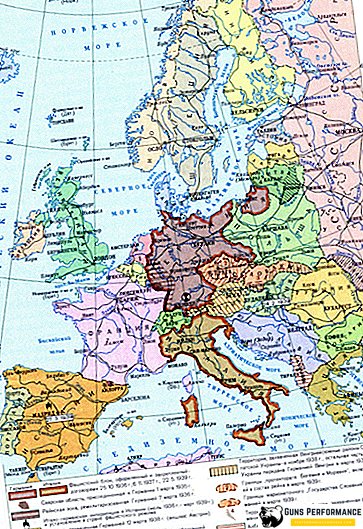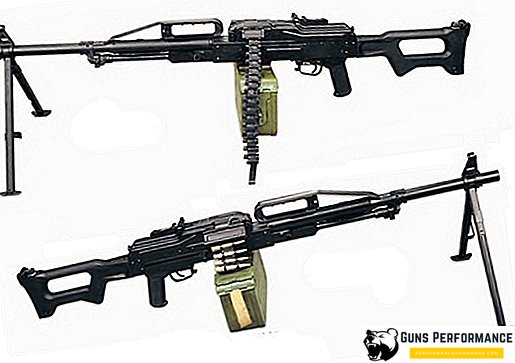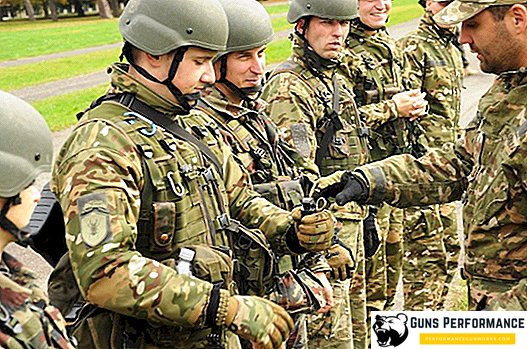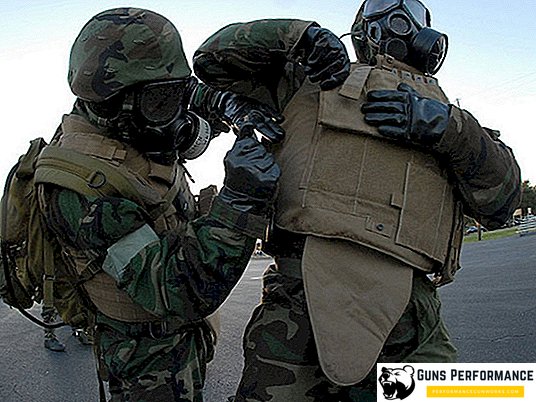The whole XX century in world history is divided into two parts: before the Second World War and after it. This conflict has become the largest in the history of mankind, who had not known before such a huge scale of destruction and loss.
Background of the Second World War

The starting point of reference in the world conflict was the clash of interests of the great powers at the beginning of the 20th century, which led to the First World War and, ultimately, to the establishment of hegemony of the Western powers (Great Britain and France) on the continent and the Versailles world. However, this hegemony did not suit the leadership of those countries that turned out to be superfluous or losers in the division of production.
The most affected countries as a result of the First World War turned out to be Russia, as a result of the civil war transformed into the Soviet Union, and Germany, deprived of the opportunity to have a large army, fleet and air force. And if in the USSR frankly revanchist sentiments were practically invisible to other countries, in Germany, under the slogan of returning the German people to their rule, the National Socialists, or the Nazis, who announced the creation of the Third Reich, came to power. Already in 1934, their leader, Adolf Hitler, headed for the militarization of the country, beginning to violate the conditions of the Versailles Peace Treaty one by one.
At the same time, along with the re-establishment of the German army - the Wehrmacht - the eyes of the National Socialists were fixed on the neighbors of Germany. In March 1938, Austria was annexed to the Third Reich, inhabited predominantly by the German people. In September of the same year, the Sudetenland of Czechoslovakia was occupied. Germany began to gain strength by annexing neighboring areas along ethnic lines.
Britain and France, however, were sluggish about attempts to curb the aggressor, in turn, trying to negotiate with Hitler. However, everything changed on March 15, 1939, when Germany, in violation of all the treaties reached earlier, occupied the rest of Czechoslovakia. It became clear that further claims of Hitler must be curbed at all costs. As a result, guarantees of independence were given to Poland, which was to become the next goal of the Third Reich. By this time, Hitler had already put forward territorial claims to Poland, which owned a narrow stretch of the Baltic Sea coast, cutting East Prussia from the rest of Germany.

The summer of 1939 passed under the sign of not only increased tension in the world, but also a number of diplomatic negotiations. Initially, negotiations were held between the USSR, Great Britain and France, and were intended to create a defensive military alliance of countries to protect against Germany. However, the British and French were little interested in the war with Germany, remembering all the horrors of the First World War. As a result, the negotiations ended in vain.
At the same time, in Asia, in the Far East, Japan has fought a war in China since 1937, completely bogged down in it. In the summer and autumn of 1939, the Japanese militarists also launched an invasion of Mongolia, but, having received a crushing defeat from the USSR, were forced to retreat.
In August of the same year, negotiations began between the Soviet Union and Germany, culminating in the signing on August 23 of the non-aggression pact (Molotov-Ribbentrop Pact) and the secret protocol to it, delimiting the spheres of influence of the two powers.
Germany’s last attempt to obtain Polish territories by peaceful means was undertaken in August 1939, but it was not crowned with success. The Polish government, encouraged by guarantees from Western countries, refused to cede its territory. Britain and France were also not going to retreat. At the same time, Hitler could not retreat, since considerations of prestige quite definitely required movement only forward. In Europe, the smell of fried.
World War II became a fact (September 1939 - May 1940)

At dawn on September 1, 1939, German forces, acting in accordance with the Weiss (White) plan, invaded Poland. The plan envisaged three strikes against converging in Warsaw: from East Prussia, from Pomerania and from Slovakia. It was also planned to surround the Polish army west of the capital and its destruction.
From the first days of the Polish campaign, the German troops managed to break through the enemy defenses and advance an impressive distance inland. The tactics of the Polish troops were mainly limited to scattered counterattacks or the withdrawal of the Vistula and Narev rivers. Already by September 10 it became finally clear that the Polish army would be defeated, and the country occupied by the Germans. Understanding this, the Polish government fled from a dying country.
By the end of September 16, the Wehrmacht succeeded, almost everywhere by breaking the resistance of the Polish troops, to reach the line Lviv-Vladimir-Volynsky-Brest-Belostok. Defended only Warsaw and the eastern part of the country. However, on September 17, Red Army troops were brought into Eastern Poland.

Historians around the world are still engaged in heated debates about what was the introduction of Soviet troops in Poland - an attack in the back or an international mission, the salvation of the Belarusian and Ukrainian peoples? When trying to answer this question, it should be understood that Poland by this time was already a disorganized state, abandoned by the government to the mercy of fate. The country could have been completely occupied by the Wehrmacht in the coming weeks, without any means of resistance. But the population of Eastern Poland was completely threatened by Jewish pogroms and mass executions that took place two years later. Thus, these facts speak for the truth of the version of the international mission of the Red Army.
On September 28, 1939, the garrison of Warsaw, the capital of Poland, capitulated. The fighting in the country ended by October 5, thereby ending the Wehrmacht Polish campaign.
Such a quick victory of Germany over Poland is explained not only by technical and numerical (62 divisions against 39) advantage, but also by deeper reasons, including operational ones. Erich von Manstein described them most fully in his book Lost Victories. The main one was that the Polish leadership, instead of having to withdraw its troops across the rivers and equip fortified lines there, decided to defend every meter of its land, which, given the extremely unfavorable configuration of the Polish borders (from three sides, the country was covered by Germany and allies) was a disastrous decision.
On September 3, 1939, the authorities of Great Britain and France presented Germany with an ultimatum, demanding an immediate cessation of hostilities against Poland, and having received a refusal, they declared war against the Third Reich. At the same time, there were no hostilities on land and in the air, although the French army, taking into account the mobilization that ended in November 1939, had about 115 divisions against 23 German forces in the west. There was only a slight advance of French troops into Germany in September, rolled up a few days after the start. After that, a "strange war" began here - the complete absence of hostilities between formally belligerent countries.
The main hostilities of the period of October 1939 - March 1940 turned into the sea. Here the German submarines began methodically destroying the merchant and combat fleet of the Entente. The German submarines achieved the greatest success in November, having destroyed the British battleship Royal Oak in Scapa Flow Bay.
However, as a whole, the war in Europe since 1939 took on a protracted, deadly character for the Third Reich. Without having the resources to wage war, Germany depended very heavily on supplies from other countries, which became noticeably smaller with the start of the war. The blockade of the country had a negative effect on its economic condition, and few in 1939 believed in the long-term conflict.
In the north of Europe, the interests of the Soviet Union and Finland collided, resulting in the Winter War, which lasted from November 30, 1939 to March 13, 1940. The result of the war was the victory of the USSR and the acquisition of a number of territories in the Baltic by it.
In 1940, the German leadership decided to strike at Norway and Denmark in order to establish control over the North Sea and establish an effective blockade of Great Britain. The result was the beginning of April 9 of the operation "Weserubing".

Already in the first days, Denmark was fully occupied, whose troops, on the orders of the king, did not resist the Wehrmacht at all. At the same time, in Norway, German troops, occupying the southern part of the country and the capital Oslo, faced resistance from the Norwegian troops and the British corps, which landed here in mid-April. As a result of the bloody battles, British troops were driven out of Norway only in June 1940.
World War II inflamed (May 1940 - June 1941)

However, the main events of 1940 unfolded in France. Back in October 1939, Hitler at a meeting of the General Staff threw his generals into shock, announcing his intention to attack France. German generals were skeptical of such an idea, but the plan "Gelb" ("Yellow") began to be developed. After a number of changes, this plan became more risky, which caused additional pessimism in the OKW (temporary headquarters).
The plan "Gelb" envisaged a strike on France, using for this the territory of the Netherlands and Belgium. However, unlike in 1914, it was planned to strike with tank units where they seemed to be unable to pass - in the Ardennes Heights. As a result, the French, Dutch, British and Belgian troops were to be cut off in northern France and destroyed, and the Wehrmacht - to attack the almost unprotected France. However, the danger for Germany was that the offensive had to begin with the equality of forces (135 German divisions against 136 from the allies).
On May 10, 1940, the German offensive in the West began. In the very first days, the Wehrmacht managed to break the resistance of the enemy and begin a decisive advance. On May 15, the Netherlands capitulated, and on May 21, tank units of Germany reached the English Channel, thus cutting off large Anglo-French-Belgian units in northern France, as planned. As a result, the Allied forces were driven back to the city of Dunkirk, from which they were evacuated by the British fleet.

After this, on June 5, Germany launched a general offensive against Paris. The French leadership, acting on the patterns of the First World War, turned out to be not ready for the Wehrmacht to advance so quickly and, on June 14, 1940, gave the enemy Paris without a fight. At the same time, on 10 June, Italy entered the war on the side of Germany, which unleashed hostilities in the south of France and occupied Savoy and Nice.
As a result, by the middle of the month France had no opportunity to resist. Her new government began negotiations with the Third Reich and on June 22 signed a peace treaty in Compiègne. The result was the occupation of 2/3 of the territory of France by Germany and the formation of a collaborationist government in Vichy.
After the fall of France, the main land battles of 1940 unfolded in Africa, where Italian troops from their colonies in Libya and Ethiopia launched an offensive on British territory, which, however, was not very successful. At the same time, German aviation (Luftwaffe) launched a massive attack on Britain in order to create conditions for the German troops to land on the island. However, having suffered heavy losses, the Luftwaffe abandoned this idea. The Wehrmacht began to transfer forces to the border with the USSR.
In the first half of 1941 almost all European countries joined the Axis, but the Balkans were restless. Here, Germany still had two opponents: Yugoslavia, which had embarked on the pro-British path as a result of the coup, and Greece, which had successfully fought with Italy since October 1940. The campaign in the Balkans began on April 6 and ended successfully in early June with the landing of German paratroopers on the island of Crete. After that, all eyes of the German leadership turned to the Soviet Union.
"The Awakening of the Giant" (June-December 1941)

On December 18, 1940, Hitler signed Directive No. 21, which provided for the implementation of the Barbarossa plan - an attack on the USSR. It was planned that during only one summer-autumn campaign the Wehrmacht would be able to crush the Red Army and reach the line Arkhangelsk-Astrakhan, which was absolutely unreal.
However, on June 22, 1941, the German troops moved forward and launched an offensive on a wide area from the Black Sea to the Barents Sea. Together with Germany, the Soviet Union was also attacked by troops of Hungary, Romania, and Finland. Spain, which was ruled by a pro-fascist general Franco, sent a "blue" division to the Eastern Front. In the first days of the war, the Red Army was subjected to a powerful blow, which in its strength was superior to those faced by France and Poland. However, at the same time, and the Wehrmacht suffered serious losses, and the plan "Barbarossa" from the first weeks began to give failures.

In July 1941, German troops managed to reach the Dnieper and create a direct threat to Leningrad and Odessa. In the following weeks, the Wehrmacht launched an offensive in the north, where Leningrad was taken in blockade in September and in the south, where by September 19 a large group of Soviet troops was surrounded and Kiev was taken. In the center, from July 10 to September 10, 1941, the Germans managed to advance only a small distance (about 100 km) due to the bitter and stubborn resistance of the Red Army units.
By December 1941, the Germans managed to occupy a significant territory of the USSR. Under the German control were Belarus, the Baltic States, almost all of Ukraine and the Crimea. The Wehrmacht stood near Moscow. However, despite all the attempts to seize the capital, the Germans did not succeed. The reasons for this can be many, ranging from the courage of the defenders of the city and the Red Army in general, ending unfavorable weather conditions and the objective inability of the German army to conduct such a long intensive military operations. As a result, already in early December, the German Blitzkrieg in the Soviet Union finally failed.
1942
On December 7, Japanese aviation suddenly, without declaring war by the Japanese government, launched an attack on the US naval base at Pearl Harbor. As a result of this massive attack, almost the entire American fleet based on the islands was destroyed. However, the attack on Pearl Harbor was far from lethal to the States, since it did not affect their aircraft carriers. Japan planned to disarm the enemy, but from December 1941 it was doomed to a long protracted war. However, the end of 1941 and the beginning of 1942 were successful for Japan. The country managed to capture a number of islands in the Pacific Ocean, to occupy the Philippines, the Dutch colonies (Indonesia) and the Malacca Peninsula.
On December 5, 1941, a counterattack of the Soviet troops began near Moscow, which became a complete surprise to the Germans. Within two months the Wehrmacht was thrown from the Soviet capital at a distance of 150 to 250 km and suffered major losses. But at the same time, the Red Army also exhausted its reserves, which made itself felt in the spring of 1942, when a number of its units were surrounded and were defeated.

At the African theater of war, the beginning of 1942 was marked by a new offensive by the German-Italian troops, who succeeded in once again knocking the British out of Libya and invading Egypt, coming close to Alexandria and Cairo. Panic reigned in the British headquarters, and the command quite seriously was preparing to evacuate troops from Egypt. However, British troops managed to survive.
In the spring of 1942, the Red Army launched an offensive in the Kharkiv region in order to surround the German forces here, destroy them and liberate the Donbass and the entire left-bank Ukraine in the summer. But the German command was able to unravel the plan of the Soviet leadership and inflicted a crushing defeat on parts of the Red Army, effectively putting those on the brink of disaster. After that, the German offensive began in the Crimea, where they also achieved complete success. As a result, the Wehrmacht took the cities of Kerch and Sevastopol.
In the summer of 1942, Hitler had high hopes. It was planned to have a quick and crushing offensive of the German troops on the southern face of the Soviet-German front, the occupation of the Caucasus and the mastery of Caucasian oil, which was critically important for the German economy. For this task, the German command allocated Army Group “A”, which included the best mechanized and mountain rifle units. On the flank of Army Group “A”, Army Group “B” was supposed to act, whose task was to cover the flank of the first group and capture the city of Stalingrad, thereby cutting off Soviet communications on the Volga. Few people in the world believed that the Red Army in 1942 would not suffer a catastrophe, and that the USSR would not be brought to its knees.

The German offensive began on June 28, 1942, and immediately reached a number of successes. Советский Юго-Западный фронт, противостоявший двум немецким группам армий, развалился и практически перестал существовать. Вермахт прорвался в степи Кубани и устремился к Кавказу и Сталинграду. В июле начались тяжёлые бои за Воронеж, продолжавшиеся до конца января 1943 года. В то же время, южнее, немецкие войска сумели овладеть огромными территориями и уже к сентябрю вышли к Сталинграду и предгорьям Кавказа. Красная Армия оказалась в критическом положении. Лишь благодаря титаническим усилиям советского руководства удалось остановить наступление, организовать линию обороны и встретить противника в Сталинграде и на Северном Кавказе.
Здесь первоначальные планы гитлеровского командования сходу овладеть Сталинградом потерпели крах. Советские войска отчаянно сопротивлялись, нередко контратакуя и нанося большие потери немцам. В итоге гитлеровцам пришлось вести изнурительные бои за каждую улицу, дом и этаж. Мужество защитников Сталинграда остановило немецкое наступление. Тем временем на Северном Кавказе немцы также были остановлены и перешли к обороне.
Становилось ясно, что немцы выдохлись и что необходимо проводить контрнаступление. К середине ноября 1942 года в районе Сталинграда были сосредоточены крупные советские силы. Это были свежие резервы, не изнурённые в боях, а также несколько механизированных корпусов. План советского командования был прост: немецкие войска в ходе наступления на Сталинград серьёзно выдохлись и были вынуждены растянуть свои коммуникации. При этом на флангах у немцев находились лишь итальянские и румынские войска. чья боеспособность была под серьёзным вопросом.
Катастрофа для немцев началась 19 ноября, когда советские войска внезапно для них перешли в наступление и уже спустя 4 дня окружили сражавшуюся в Сталинграде группировку вермахта. При этом группировка практически не предпринимала усилий вырваться из ловушки, благодаря чему её судьба была решена. Однако извне немецкие войска всё же пытались контрнаступать, но весьма неудачно. К тому же группа армий «А» на Кавказе подверглась мощному давлению. К началу 1943 года немецкие войска стремительно отступали из Кавказа и Кубани, преследуемые Красной Армией. 2 февраля 1943 года немецкая группировка, окружённая под Сталинградом, капитулировала.
Осенью 1942 года Алжир был оккупирован американскими войсками, благодаря чему для немецко-итальянских войск в Африке сложилась безнадёжная ситуация. Этот факт, наряду с поражением при Эль-Аламейне в Египте, заставил германское командование начать отвод войск в Тунис, который был взят под контроль итальянской армией.
На Тихом океане события 1942 года ознаменовались наступлением японских войск. Лишь к концу года их планы были несколько нарушены не совсем удачными для японцев сражениями за Гуадалканал и Мидуэй.
Перелом в великой отечественной войне (1943 - июнь 1944)

В начале 1943 года Красная Армия нанесла ряд поражений германским войскам и вышла примерно на те же рубежи, что и годом ранее. Однако на 1943 год планы кардинально поменялись. Советское командование решило дождаться, когда немцы начнут новое наступление, измотать вермахт и лишь тогда перейти в контрнаступление. Две крупнейшие армии мира застыли друг перед другом.
Германское наступление началось 5 июля 1943 под городом Курск. Здесь немцы столкнулись с мощной советской обороной и спустя две недели были вынуждены прекратить наступление. Красная Армия начала контратаки, которые окончательно изматывали вермахт, и в начале августа началось немецкое отступление. Победа под Курском открыла перед советским руководством множество перспектив, которые и были блестяще использованы. В сентябре началось советское наступление, которое продолжалось вплоть до весны 1944 года. Его результатом стало освобождение Донбасса (в сентябре), Киева (6 ноября) и ряда областей Правобережной Украины.
В мае 1943 года от немецко-итальянских войск была очищена Африка, а в июле англо-американские войска высадились на острове Сицилия, принадлежащему Италии. В Италии, уже довольно истощённой войной, росло недовольство политикой Муссолини, что вылилось в переворот 25 июля 1943 года. В результате Италия вышла из войны на стороне Германии, но вскоре была почти полностью оккупирована вермахтом. Тем не менее, таким образом Германия получила новый фронт, так как уже в сентябре союзники высадились на юге Аппенинского полуострова.
На Тихом океане 1943 год также ознаменовался постепенным наступлением американцев. Японское руководство окончательно потеряло инициативу в войне и теперь было вынуждено оставлять острова. Также не очень удачными были их действия и в Китае.

1944 год стал первым годом, когда германское командование более не планировало крупных наступательных действий на Восточном фронте. Отступая под ударами Красной Армии, немцы пытались создать рубежи обороны, однако все их попытки заканчивались неудачно. К июню 1944 года советско-германский фронт серьёзно отодвинулся на запад.
6 июня американские войска высадились в Северной Франции, тем самым образовав второй фронт для стран Оси. В августе был освобождён Париж, а в сентябре союзники вошли на территорию Третьего Рейха. После этого в поражении Германии и её союзников уже мало кто сомневался, но судьба войны всё же решалась на Восточном фронте. Здесь 23 июня (по другим источникам 22 июня) началась крупнейшая наступательная операция Красной Армии, обернувшаяся катастрофой для вермахта. целая группа армий была практически уничтожена, и за два месяца советские войска подошли к Варшаве. На севере Красная Армия в течение июня-ноября освободила почти всю Прибалтику (кроме Курляндии) и вывела из войны Финляндию, вступив на территорию Норвегии.
На юге советские войска начали освобождение балканских народов. Всего за несколько месяцев Германия лишилась плацдарма на Балканах и союзников в виде Болгарии и Румынии. Красная Армия вошла на территорию Югославии и освободила Белград. Вместе с советскими солдатами здесь сражались и бойцы Народно-освободительной армии Югославии.
Падение Третьего Рейха (январь - май 1945)

К началу 1945 года Германия оказалась на грани катастрофы. Войска союзников освободили практически всю Францию и уже вели бои на территории Третьего Рейха. На юге союзники наступали в Италии, постепенно перемалывая сопротивление вермахта. На Балканах немецкие войска также были вынуждены отступать под ударами Красной Армии. И лишь в Польше линия фронта была стабильна с сентября 1944-го. Однако именно здесь немцы и потерпели сокрушительное поражение.
Наступление Красной Армии началось 12 января 1945 года. Уже через 5 дней была освобождена Варшава, а к концу месяца линия фронта уже была в районе реки Одер, в 70 км от Берлина. Однако штурма немецкой столицы уже в феврале 1945 года не произошло - необходимо было подтянуть фланги и разгромить немецкие войска на других направлениях.
В феврале-апреле советские войска освободили Югославию и овладели столицей Австрии - Веной. Также из войны была выведена Венгрия - последняя союзница Третьего Рейха в Европе. На Западе союзники овладели почти всей территорией Германии, и к концу апреля в руках у немцев оставалась лишь узкая полоса с Берлином, тянувшаяся с севера на юг, и плацдарм в Австрии.
Берлинская операция началась 16 апреля 1945 года. Красной Армии удалось прорвать оборону немецких войск и расчленить их на подступах к городу, тем самым существенно облегчив задачу по его штурму. 21 апреля советским войскам удалось прорваться в Берлин и завязать городские бои. В результате к 30 апреля почти весь город оказался в руках Красной Армии, а Гитлер покончил жизнь самоубийством. 2 мая гарнизон Берлина капитулировал.
После этих событий германские войска начали складывать оружие. Становилась очевидной бесполезность дальнейшего сопротивления. В ночь с 8 на 9 мая 1945 года в берлинском пригороде Карлсхорст был подписан акт о безоговорочной капитуляции германских вооружённых сил. Война в Европе закончилась, но отдельные столкновения с разрозненными частями вермахта, не получившими известий о капитуляции либо отказавшимися капитулировать, продолжались вплоть до июня.
Крушение японского милитаризма (июнь - сентябрь 1945)

После падения Третьего Рейха в мире оставался ещё один агрессор - Японская империя.
В ходе боёв 1944 года японские вооружённые силы потерпели ряд сокрушительных поражений, так что окончательное поражение Японии стало делом времени. В начале 1945 года от японским войск были очищены Филиппины и ряд островов на Тихом океане.
Американское руководство, понимая, что при высадке в Японии потери будут весьма крупными, решило принудить противника к капитуляции посредством атомных бомбардировок. 6 августа атомная бомба была сброшена на Хиросиму, 9 - на Нагасаки.
8 августа советское правительство, верное своему союзническому долгу, объявило войну Японии и развернуло наступление в Маньчжурии и Корее. В результате одна из мощнейших японских армий, Квантунская, была разгромлена меньше чем за месяц. Этот факт, вкупе с разрушительными атомными бомбардировками, заставил японское руководство подписать акт о капитуляции, что и произошло 2 сентября 1945 года на борту линкора «Миссури». Вторая мировая война завершилась полным разгромом агрессора.
Последствия и итоги ВОВ

Вторая мировая война стала самым глобальным и масштабным катаклизмом в истории человечества. Конфликт оказал огромное влияние на современную жизнь, причём не только в военной сфере. Ежегодно 8 и 9 мая в европейских странах отмечается как День Победы над нацизмом.
В результате Второй мировой войны границы в Европе существенно изменились. Германия потеряла ряд территорий в пользу СССР и Польши. Была возобновлена независимость ряда стран: Чехословакии, Австрии, Югославии, Албании, Люксембурга, Дании, Польши, Греции и Норвегии. В Европе сформировалось два военно-политических блока - просоветский и проамериканский, создание которых положило начало Холодной войне.
Суммарные потери человечества во Второй мировой войне колоссальны - примерно 63 миллиона человек. Основную часть этих потерь, конечно, составляют мирные жители. Вторая мировая война была настолько интенсивной, что мирное население территорий, затронутых войной, довольно часто просто не могло спастись от смерти и разрушений.
Потери Антигитлеровской коалиции и стран Оси разнятся и составляют 46 и 17 миллионов соответственно. При этом союзные державы потеряли около 30 миллионов мирного населения, а Германия, Япония и их союзники - 8. Это объясняется тем, что войска стран Оси зачастую допускали нечеловеческую жестокость к местному населению. К тому же в начальном периоде войны (1939-1942 гг.) под контролем Германии и её союзников оказались огромные территории, на которых и устанавливался совершенно бесчеловечный и человеконенавистный «новый порядок».
Военные потери стран Оси также меньше и составляют около 9 миллионов против 16 миллионов у союзных держав. Это объясняется тем, что во время войны, особенно в её начальном периоде Третий Рейх вторгался в страны, совершенно не готовые к обороне. Однако в целом на период 1943-1945 гг. ситуация с потерями сторон изменилась. В этот период именно страны Оси несли потери, превышавшие потери стран Антигитлеровской коалиции.
Наибольшие потери во Второй мировой войне понёс Советский Союз, ведь именно Красная Армия внесла объективно больший вклад в победу. Огромные территории СССР оказались в оккупации, а их население нередко подвергалось жестокостям со стороны гитлеровцев. В период с 1943 по 1945 год советские войска вели наступательную войну, которая была не только сложнее в материально-техническом плане, но и в плане потерь. В результате, заплатив огромную цену, Красная Армия подарила свободу ряду европейских стран. Потери СССР оцениваются в среднем в 8,6 миллионов человек убитыми и умершими от ран, а также около 5 миллионов пленными. При этом потери гражданского населения составили примерно 13,6 миллионов человек.
Вторая мировая война в первую очередь явилась страшной трагедией для всего мира. Долг современных народов и правительств - не допустить повторения подобной трагедии.












